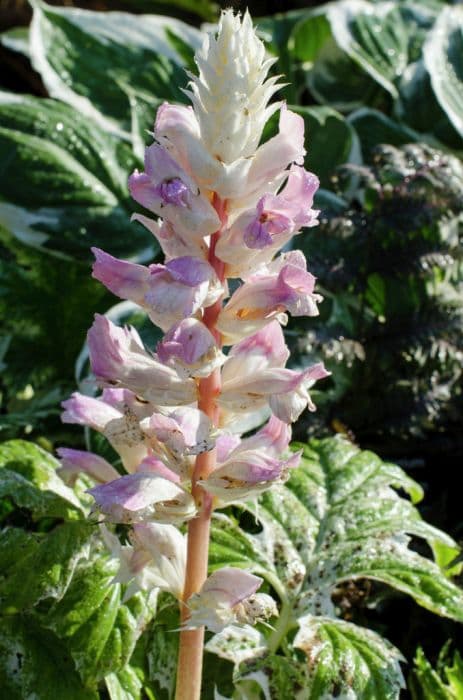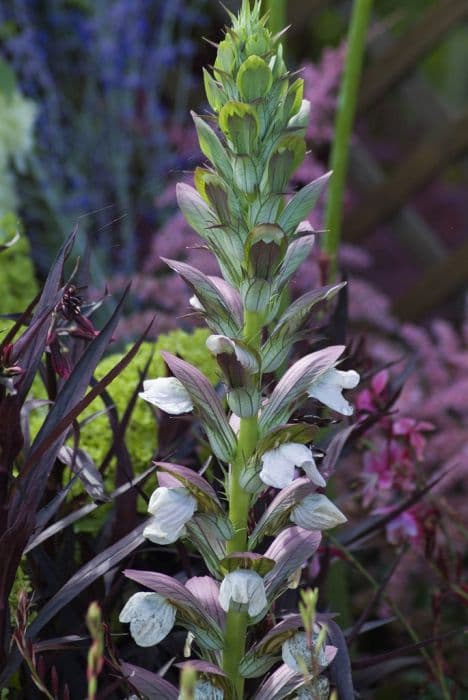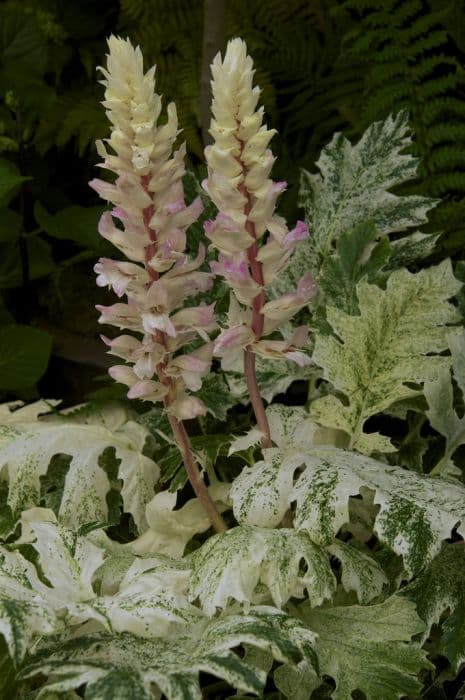Velvetleaf Dicliptera Dicliptera sericea

ABOUT
Dicliptera sericea, commonly known as the Hummingbird Plant, is a perennial that is recognized for its ornamental appeal. It possesses a robust, shrub-like appearance with a dense, lush foliage that exudes a velvety texture. The leaves are a deep green color and have a slightly wrinkled surface, which contributes to their soft, tactile nature. The Hummingbird Plant is celebrated for its vibrant flowers, which make their appearance in clusters. These blossoms are tubular, inviting attention with their glowing shades of orange and red. Their shape and color are a natural attractant to hummingbirds, hence its common name. The flowers protrude from the foliage on slender stems that allow them to bob and sway gracefully with the breeze. The overall appearance of this plant is one of vibrancy and movement, with its striking blooms standing out against the backdrop of plush leaves. It has an informal, yet spirited aspect that adds a touch of the tropics to any garden setting. Its lush disposition is often used to add texture and a splash of color in landscape designs. The plant's affinity for warm climates is evident in its lush growth and continual flowering.
About this plant
 Names
NamesFamily
Acanthaceae
Synonyms
Hummingbird Plant, Uruguayan Firecracker Plant, Velvet Plant
Common names
Diapedium sericeum, Dicliptera paniculata, Dicliptera squarrosa, Dicliptera tomentosa, Justicia pohliana, Peristrophe paniculata, Peristrophe sericea.
 Toxicity
ToxicityTo humans
Dicliptera sericea, commonly known as Hummingbird Plant, does not have a well-documented profile of toxicity to humans. There is a lack of specific information regarding its poisonous properties, and traditional use in some cultures might suggest it is not highly toxic. However, without clear scientific evidence, it is generally advised to avoid ingesting any part of plants that are not known to be safe. If a plant like Hummingbird Plant were toxic, common symptoms of plant poisoning may include nausea, vomiting, diarrhea, abdominal pain, and possibly more severe reactions depending on the amount consumed and the individual's sensitivity. Always consult with a medical professional or poison control center if ingestion and symptoms occur.
To pets
Hummingbird Plant's toxicity profile for pets such as dogs and cats is also not well-established in the literature. It is not commonly listed among plants known to be poisonous to domestic animals. However, the lack of information means that it cannot be deemed entirely safe, and precautions should be taken. If a pet ingests part of a Hummingbird Plant and it were toxic, the pet might exhibit symptoms such as gastrointestinal upset, vomiting, diarrhea, drooling, or more serious conditions depending on the amount ingested and the specific sensitivity of the animal. If you suspect your pet has ingested this plant and is showing symptoms of poisoning, it is essential to contact a veterinarian immediately.
 Characteristics
CharacteristicsLife cycle
Perennials
Foliage type
Deciduous
Color of leaves
Green
Flower color
Red
Height
2 feet (0.61 meters
Spread
2 feet (0.61 meters
Plant type
Shrub
Hardiness zones
9
Native area
South America
Benefits
 General Benefits
General Benefits- Attracts Pollinators: Dicliptera sericea, commonly known as Hummingbird Plant, is known to attract hummingbirds and other pollinators, aiding in the pollination of nearby plants.
- Drought Tolerance: The Hummingbird Plant is well-suited to xeriscaping as it can thrive in dry conditions, making it an excellent choice for water-wise gardens.
- Low Maintenance: This plant requires minimal care, making it ideal for gardeners who prefer low-maintenance landscapes.
- Landscape Aesthetics: With its vibrant flowers and attractive foliage, the Hummingbird Plant adds visual interest and aesthetic appeal to gardens and landscapes.
- Wildlife Habitat: It provides shelter and food resources for wildlife, particularly hummingbirds and beneficial insects.
- Soil Erosion Control: The root system of Dicliptera sericea helps stabilize soil, thus contributing to erosion control, especially in sloped areas.
 Medical Properties
Medical Properties- Anti-inflammatory: Dicliptera sericea is traditionally used for its potential anti-inflammatory properties.
- Antioxidant: The plant may possess antioxidant compounds that help to combat oxidative stress.
- Antimicrobial: Some studies suggest that Dicliptera sericea can be effective against certain bacteria and fungi.
- Analgesic: It is believed to have pain-relieving properties, and may be used to alleviate different types of pain.
- Wound healing: There is evidence to support the use of Dicliptera sericea in promoting wound healing due to its possible anti-inflammatory and antimicrobial effects.
- Diuretic: The plant has been traditionally used to increase urine flow and reduce fluid retention.
 Air-purifying Qualities
Air-purifying QualitiesThis plant is not specifically known for air purifying qualities.
 Other Uses
Other Uses- Dicliptera sericea, commonly known as the Hummingbird bush, is utilized in butterfly gardens to attract various species due to its nectar-rich flowers.
- In some regions, Hummingbird bush is regarded as a good natural source for honey production, supporting local beekeeping practices.
- With its vibrant blooms, Hummingbird bush can serve as a natural dye source for fabrics, imparting a delicate color derived from the flowers.
- The plant can be employed in educational settings like schools for botanical studies, highlighting plant-pollinator interactions.
- Due to its aesthetic appeal, Hummingbird bush is sometimes used in floral arrangements and garden landscapes as an ornamental specimen.
- The plant's ability to thrive in harsh conditions makes it suitable for erosion control projects and slope stabilizations.
- In craft activities, the flowers of Hummingbird bush are sometimes pressed and used for decorative purposes in handmade paper and bookmarks.
- Hummingbird bush foliage can be used as a natural filler in mixed borders or as a green backdrop in artistic photography.
- Some cultures may use the dried plant in traditional ceremonies or for ornamental decoration during festive occasions.
- The branches and stems of Hummingbird bush can be utilized in the creation of small garden structures like trellises or informal supports for other plants.
Interesting Facts
 Feng Shui
Feng ShuiThe plant Dicliptera sericea is not used in Feng Shui practice.
 Zodiac Sign Compitability
Zodiac Sign CompitabilityThe plant Dicliptera sericea is not used in astrology practice.
 Plant Symbolism
Plant Symbolism- Hummingbird Attraction: Dicliptera sericea, commonly known as Hummingbird Plant, is symbolic of allure and attraction because it is known to attract hummingbirds due to its nectar-rich flowers.
- Resilience: This plant is resilient and can thrive in tough conditions, representing the ability to endure and adapt to challenging environments.
- Passion: The vibrant color of the Hummingbird Plant's flowers is often associated with passion and energy, symbolizing a vibrant and enthusiastic spirit.
 Water
WaterFor the Hummingbird Plant (Dicliptera sericea), water thoroughly when the top inch of soil feels dry to the touch, which typically means once a week to maintain consistent moisture. During the active growing season in spring and summer, you might need to water more frequently, especially if it's particularly hot or dry. In cooler months, reduce the frequency as the plant's water needs will decrease. Provide enough water to soak the soil all the way to the roots, approximately 1 gallon every two weeks for an average-sized plant, but adjust according to your plant's size and environmental conditions.
 Light
LightThe best light conditions for the Hummingbird Plant (Dicliptera sericea) is bright indirect light or partial shade. Avoid prolonged exposure to direct midday sun, as it can scorch the leaves. A spot that receives morning sunlight with dappled afternoon shade is ideal. This ensures the plant receives sufficient light without the risk of damage from intense sun.
 Temperature
TemperatureFor the Hummingbird Plant (Dicliptera sericea), the ideal temperature range is between 50°F and 85°F. It can survive minimum temperatures of around 40°F; however, prolonged exposure to cold can be damaging. The plant prefers consistently warm conditions but should be protected from extreme heat over 90°F.
 Pruning
PruningPruning the Hummingbird Plant (Dicliptera sericea) promotes bushier growth and encourages blooming. Trim back leggy stems and deadhead spent flowers to maintain the plant's shape and vitality. The best time for pruning is in late winter or early spring before new growth starts. Pruning can be performed as needed throughout the growing season to remove any dead or yellowing leaves.
 Cleaning
CleaningAs needed
 Soil
SoilThe Hummingbird Plant (Dicliptera sericea) thrives in well-draining, loamy soil with an addition of peat or perlite. The preferred pH range for the Hummingbird Plant is between slightly acidic to neutral, around 6.0 to 7.0.
 Repotting
RepottingThe Hummingbird Plant (Dicliptera sericea) should be repotted every 2 to 3 years or when it appears to be outgrowing its current container, to refresh the soil and provide room for growth.
 Humidity & Misting
Humidity & MistingThe Hummingbird Plant (Dicliptera sericea) prefers moderate to high humidity levels, but is adaptable and can tolerate lower humidity if necessary.
 Suitable locations
Suitable locationsIndoor
Place in bright, indirect light; water when topsoil is dry.
Outdoor
Plant in partial shade; protect from direct afternoon sun.
Hardiness zone
8-11 USDA
 Life cycle
Life cycleDicliptera sericea, also known as the silver velvet plant, begins its life cycle when its seeds germinate, usually in warm, moist soil conditions. The seedlings emerge with cotyledons (seed leaves), and as they grow, true leaves develop, which are silvery and velvety to the touch due to fine hairs. As the plant matures, it develops a bushy form with stems that can reach up to several feet in height. The silver velvet plant produces tubular, two-lipped flowers that are typically orange to red, which attract pollinators such as hummingbirds and butterflies, leading to cross-pollination. After successful pollination, the flowers develop into fruit capsules containing seeds, which when mature, are dispersed to begin a new generation. In suitable climates, Dicliptera sericea can become a perennial, going through the process of flowering and seed production yearly.
 Propogation
PropogationPropogation time
Spring to summer
Propogation: For the hummingbird bush (Dicliptera sericea), the most popular method of propagation is through cuttings. This typically takes place during the warmer months when the plant is actively growing. To propagate, take a cutting of about 4 to 6 inches (approximately 10 to 15 centimeters) from a healthy stem, strip the bottom leaves, and dip the cut end into rooting hormone. Then insert the cutting into a pot filled with moist potting mix. Ensure the pot has good drainage and cover it with a plastic bag to retain humidity. Place the pot in a warm area with indirect sunlight and keep the soil consistently moist. Roots will usually develop within a few weeks, after which you can gradually acclimatize the new plant to less humid conditions before transplanting it outside.
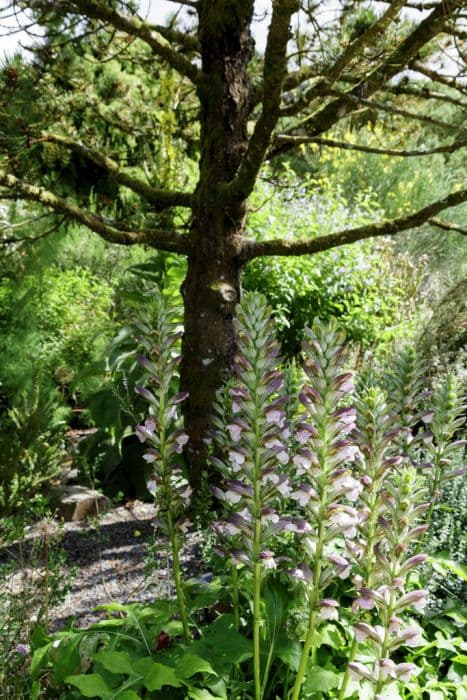
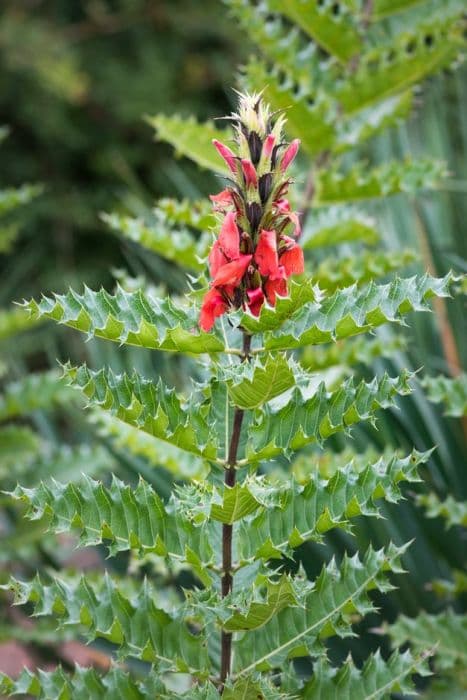
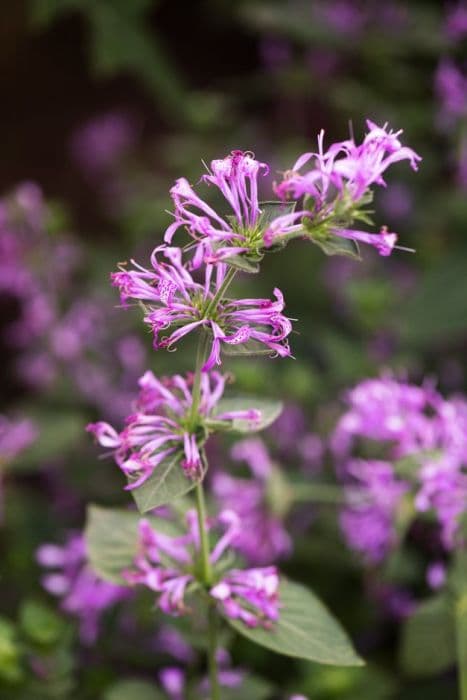
![Black-eyed Susan [Sunny Suzy Red-Orange]](/_next/image?url=https%3A%2F%2Fplants-admin.emdemapps.com%2Fimages%2Fplants%2F%2Fimages%2F607ea5891ee3f.jpg&w=640&q=75)

